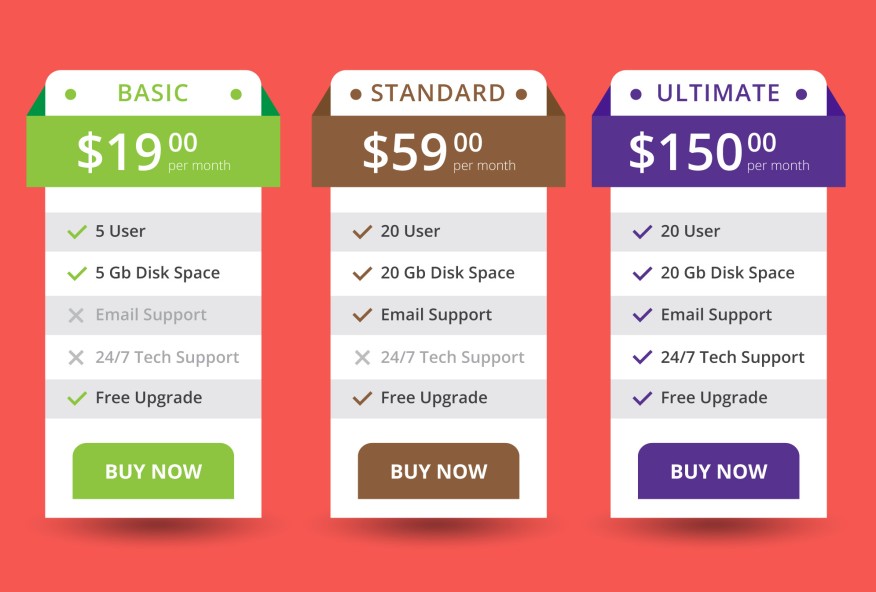As the software-as-a-service (SaaS) market rapidly expands, more companies are looking to enter this high-growth space. But with so many options and products available, it can be difficult to know how to differentiate your offerings and develop a successful go-to-market (GTM) strategy.
This comprehensive guide will cover everything you need to know about developing a SaaS GTM strategy, its key components, and how you can create a unique strategy for your business. We’ll also provide tips on how to scale your SaaS business and some common mistakes to avoid. By the end of this guide, you’ll have a solid understanding of what it takes to develop a successful SaaS GTM strategy. So let’s get started!
What is a SaaS go-to-market strategy?
A SaaS go-to-market strategy is a comprehensive plan that details how you will market and sell your SaaS product to customers. This strategy should be tailored to your specific business goals, target market, and products or services. As the go-to-market strategy definition from HubSpot states, “Your go-to-market strategy should be the cohesive story linking together your product, your market, and your message.”
In other words, your GTM strategy should lay out a clear plan for how you’ll reach your target market and communicate the value of your product. It should also consider any unique selling points or differentiators that will help you stand out from the competition. Different aspects like pricing strategy, target audience, target market, value proposition, and product positioning all play a role in formulating an effective go-to-market strategy.
Why is a SaaS Go-To-Market Strategy Important?
Before we get into how to develop a SaaS go-to-market strategy, it’s important to understand why having one is so critical to success.
Helps you focus your resources
When you have a plan and know what your priorities are, you can focus your time and energy on the tasks that will move the needle forward instead of wasting time on activities that aren’t helpful. Usually, a SaaS business fails because they don’t focus and are trying to do too many things at once without seeing any results. In today’s fast-paced world, you need to focus on what’s important and eliminate anything slowing you down.
Whether you’re a startup or an established company, having a go-to-market strategy will help you focus your resources to achieve your goals. When you know your priorities and what needs to be done to reach your target market, you can allocate your resources more effectively. This includes your budget, team time, and marketing efforts. Different saas companies will have different needs, so it’s important to tailor your strategy to fit your specific situation.
Keeps you organized
A SaaS go-to-market strategy is a roadmap that will help you organize your thoughts and ideas to execute your plan effectively. It’s easy to get overwhelmed and lose sight of your goals when you’re trying to grow a business, but if you have a solid plan, it will be easier to stay on track. When a sales strategy is well organized, it’s easier to track progress and measure results. Suppose you want to increase sales by 20% in the next quarter. If you have a plan in place, you can track your progress and see if you’re on track to reach your goal. If you don’t have a plan, it will be much harder to tell if you’re making progress.
Helps you better understand your customers
Your go-to-market strategy should include a deep understanding of your target market. This research will help you determine your ideal customers, what they need, and how you can reach them. Without this understanding, creating effective marketing and sales materials would be difficult. If you don’t know who your target market is, it will be difficult to sell your product. The customer lifetime value is one of the most important aspects of a SaaS business, and if you don’t understand your customer’s needs, it will be difficult to keep them happy. Plus, the customer acquisition costs will be higher because you’ll be selling to people who are not a good fit for your product.
Helps you set realistic goals
Getting caught up in the excitement of growing your business and setting lofty goals can be easy, but without a SaaS go-to-market strategy, it will be difficult to achieve these goals. A good strategy will help you set realistic goals that are achievable and measurable. This way, you can track your progress and make adjustments as needed. Suppose your market strategy is to focus on acquiring new customers. In that case, your goal might be to acquire 100 new customers in the next six months. This goal is specific, measurable, achievable, relevant, and time-bound (SMART). Your sales team can track their progress and see if they’re on track to reach the goal. If they’re not, they can adjust their strategy.
Do you need help developing a successful SaaS go-to-market strategy?
Contact Growth Hackers
Keeps you flexible and nimble
The beauty of having a SaaS go-to-market strategy is that it allows you to be flexible and nimble as your business grows. Having the right scrum master skills is important when coupled with agile methodology and flexible mindset. As your target market changes and your priorities shift, you can adjust your strategy accordingly. This means that you can always be ready to take advantage of new opportunities as they arise. If your potential customers’ needs change, you can quickly adapt your offerings to meet those needs. Suppose one of your key competitors launches a new product or service. You can quickly adjust your strategy to take advantage of the situation. The pricing model, the features, the target market, and the sales process can all be adapted to meet the new challenge.
Makes it easy to track progress and measure success
A SaaS go-to-market strategy provides a framework for tracking progress and measuring success. This is essential for any business, but it’s especially important for fast-growing companies. When you have a clear plan, setting goals and tracking your progress is easy. This lets you know whether you’re on track to reach your objectives. It also allows you to make necessary adjustments along the way.
Helps you raise money from investors
A SaaS go-to-market strategy can be a valuable tool if you’re planning to raise money from investors. Investors want to see that you have a clear plan for how you’re going to achieve your growth objectives. They also want to see that you understand the market and your competition. A well-thought-out strategy will give them the confidence they need to invest in your company. You may find marketing strategies and templates online to help you develop a comprehensive plan.
What are the Different Types of SaaS Go-To-Market Strategies
For your SaaS company, you don’t just want to implement a few marketing channels that aren’t connected with each other. What you want is to create a SaaS sales funnel with a multi-channel marketing approach. Following are the types of SaaS go-to-market strategies:
Inbound Marketing
The inbound marketing strategy focuses on attracting customers to your product or service through various online channels. This includes creating valuable content, optimizing your website for search engines, and using social media to build a community around your brand.
Channels like SaaS SEO takes time to bring results. Therefore, it’s key to work on it as early as possible.
Outbound marketing
The outbound marketing strategy involves actively reaching out to potential customers through traditional advertising, cold-calling, and SaaS email marketing.
Referral marketing
Referral marketing is a strategy whereby you encourage customers or partners to promote your product or service to their network. This can be done by offering incentives such as discounts or rewards. Suppose you offer a 10% discount to customers for every new customer they refer to. In this way, you can tap into your customer’s network and acquire new leads and customers at a lower cost.
Channel marketing
Channel marketing is a type of marketing that involves developing and managing relationships with third-party organizations that resell your product or service. Channel marketing aims to create co-marketing opportunities and increase visibility for your product or service. Channel marketing can also help to generate leads and sales.
PR and Communications
Usually, when we think about marketing, we think about paid advertising. However, there is another important aspect of marketing, which is Public Relations (PR). PR is about building relationships with the media and getting your brand name out through earned media coverage. This can be in press releases, media relations, or even influencer outreach.
User Acquisition
User acquisition is about attracting new users for your product or service. This can be done through various means, such as paid advertising, organic search, or social media. The goal of user acquisition is to grow your user base and expand your reach.
Pricing strategy
Pricing is one of the most important aspects of your go-to-market strategy. It’s important to consider what price point will be most attractive to your target market and generate the most revenue for your business. There are various pricing models that you can choose from, such as subscription-based, usage-based, or freemium.
Virality
Virality is the process of getting your product or service to spread like wildfire through word-of-mouth. This can be done through various means, such as creating shareable content, offering incentives for sharing, or making it easy for people to share your product or service with their networks.
Achieve your business goals by successfully implementing a SaaS go-to-market strategy!
How to Develop a SaaS Go-To-Market Strategy
Now that you understand the importance of having a SaaS go-to-market strategy, it’s time to start developing your own. The following steps will help you create a strategy that will work for your business.
Define your target market
Whenever you’re creating a new SaaS marketing strategy, you must have a clear understanding of your target market. This will help you determine the best way to reach them and what type of messaging will resonate with them. When it comes to a SaaS go-to-market strategy, you need to be especially specific about who your target market is. Like the things we mentioned before, there are a lot of different types of businesses that use SaaS products. This means you can’t just target “businesses” as a whole. You need to be more specific than that.
Some questions you can ask yourself to help define your target market include:
-What type of business are they in?
-What size is their company?
-What’s their revenue?
-What’s their geographic location?
-What SaaS product are they using (or looking for)?
Research your competition
Once you clearly understand your target market, you need to start researching your competition. This will help you understand what’s already out there and what type of messaging resonates with your target market. It will also help you determine what makes your product unique and how you can position it in the market.
When you’re researching your competition, there are a few things you should keep in mind. First, you need to make sure you’re looking at the direct and indirect competition. Direct competition is any company offering a similar product to the one you’re selling. Indirect competition is any company offering a solution to the same problem that your product solves, even if they’re not using the same technology.
Second, you need to look at both online and offline competition. Just because a company doesn’t have an online presence doesn’t mean they’re not competing with you. Offline competition can sometimes be even more dangerous because they’re not as easy to find and research.
Third, you need to research both small and large companies. Getting caught up in researching only the big players in your industry is easy, but don’t forget about the smaller companies. They can sometimes be more nimble and agile, which means they can quickly adapt to changes in the market.
Develop your value proposition
Your value proposition is the one thing that sets your product apart from all the other products in the market. It’s what makes you unique and will convince your target market to choose your product over all the others.
When you’re developing your value proposition, you need to keep three things in mind:
– What needs does your product address?
– How does your product meet those needs better than any other product in the market?
– What sets your product apart from all the other products on the market?
If you can answer these three questions, you’re well on developing a strong value proposition.
Create a pricing structure
Your pricing structure will be determined by several factors, including the value of your product, the price of your competitor’s products, and the willingness of your target market to pay for your product. A lot of SaaS products are priced on a subscription basis, meaning that customers pay a recurring fee to use the product. This can be monthly, yearly, or even per use. If your product is priced on a per-use basis, then you need to ensure that your pricing is in line with the value your customers are getting from the product.
Develop your marketing strategy
Now it’s time to start putting together your marketing strategy. This is where you’ll decide what type of messaging you will use to reach your target market, what type of channels you will use to reach them, and what type of budget you will allocate to your marketing efforts.
You can use several different marketing channels to reach your target market. Some of the most common include:
– Social media
– Content marketing
– Search engine marketing
– Email marketing
– Paid advertising
The key is experimenting with different channels and seeing which ones work best for your business. There’s no one-size-fits-all approach to marketing, so don’t be afraid to try out new things.
Launch your product
After you’ve developed your marketing strategy, it’s time to launch your product. This is where all your hard work comes together, and you get to see if your product will succeed.
There are a few things you should keep in mind when you’re launching your product. First, you need to make sure that you have a solid plan in place. This means figuring out everything from your marketing strategy to your pricing structure before you launch.
Second, you need to make sure that you have a way to track your progress. This can be as simple as setting up Google Analytics on your website or using a more sophisticated tracking system like KISSmetrics.
Third, you need to be prepared for the worst. No matter how good your product is, there’s always a chance that it will fail. You must be prepared to pivot and try something new if this happens.
Continue growing your business
Once you’ve launched your product, it’s not time to sit back and relax. You need to continue working hard to grow your business. This means continuing to market your product, adding new features and functionality, and expanding into new markets.
If you can keep growing your business, you’ll eventually reach a point where you’re making more money than you ever thought possible. So don’t give up, even if things get tough.
Final Words on SaaS Go-To-Market Strategy
Launching a successful SaaS product is no easy feat. There are many moving parts, and things can quickly get out of control if you’re not careful.
But if you take the time to develop a solid go-to-market strategy, you’ll be in a much better position to succeed. Just remember to focus on creating value for your customers, developing a strong marketing strategy, and continuing to grow your business. If you can do these things, you’ll be well on your way to building a successful SaaS company.
Growth Hackers is a leading B2B SaaS marketing agency helping businesses from all over the world grow. There is no fluff with Growth Hackers. We help entrepreneurs and business owners develop a SaaS go-to-market strategy successfully, generate qualified leads, optimize their conversion rate, gather and analyze data analytics, acquire and retain users and increase sales. We go further than brand awareness and exposure. We make sure that the strategies we implement move the needle so your business grow, strive and succeed. If you too want your business to reach new heights, contact Growth Hackers today so we can discuss about your brand and create a custom growth plan for you. You’re just one click away to skyrocket your business.











